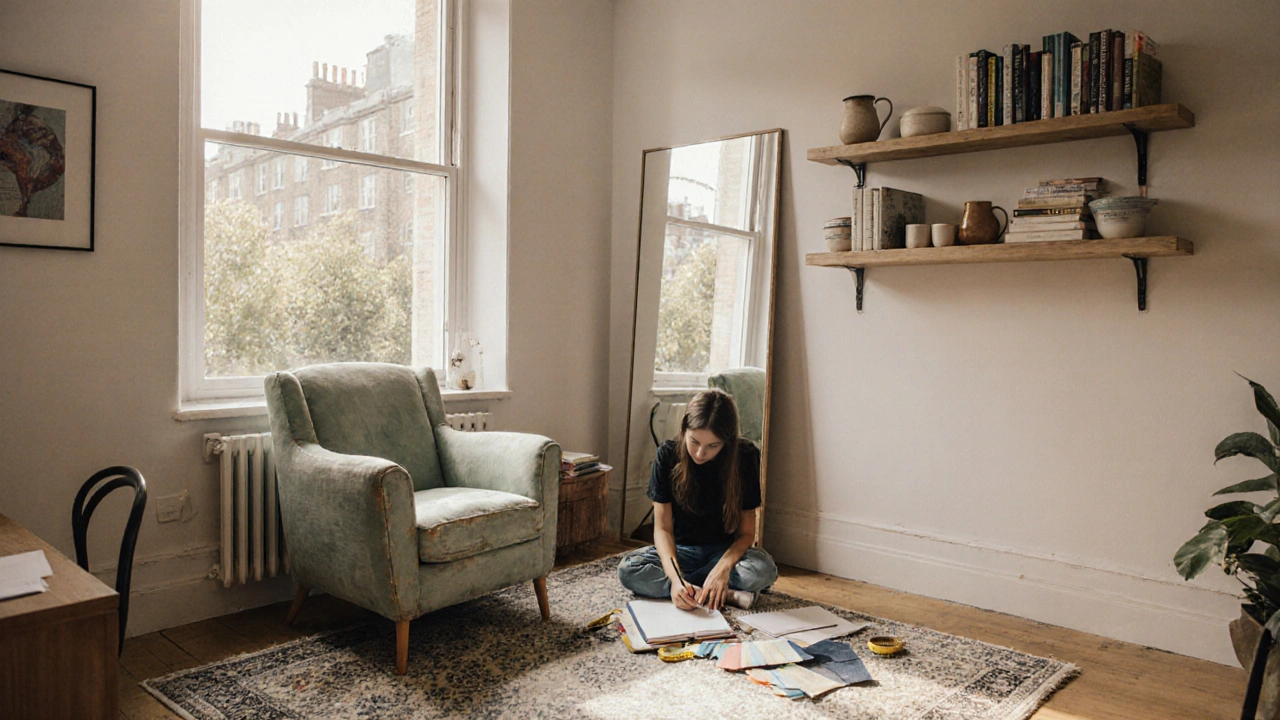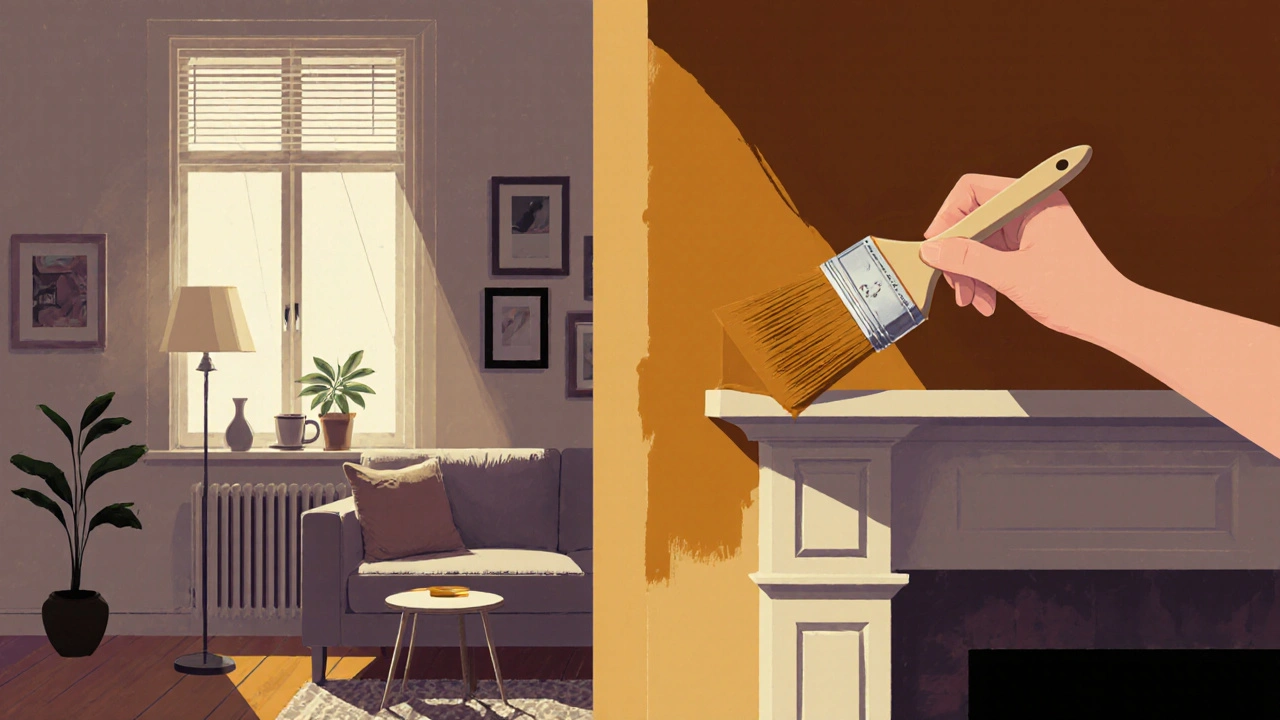
Want to turn your flat into a space that feels like you - without spending a fortune on decorators? You don’t need a degree in architecture or a six-figure budget. What you need is the right training. London has some of the most practical, hands-on interior design courses in the world, and many of them are built for people who just want to make their homes feel better - not become professional designers.
What You Really Learn in a Home Styling Course
Most people think interior design is about picking fancy furniture or matching throw pillows. It’s not. Real home styling is about understanding space, light, and how people move through rooms. A good course in London won’t teach you how to use Canva to make mood boards. It’ll teach you how to make a tiny studio feel bigger, how to pick colors that don’t make your ceiling look low, and how to arrange furniture so your living room doesn’t feel like a maze.
Take the home styling skills course at The London Interior Design School. Students spend three weeks learning how to read a room’s natural flow. They learn how to use mirrors to bounce light, how to layer rugs to define zones in open-plan spaces, and why buying one great sofa beats buying five cheap ones. These aren’t theories. They’re tricks used by designers who’ve worked on real London flats - from converted warehouses in Shoreditch to terraced homes in Notting Hill.
Why London? It’s Not Just the City
London isn’t just a place with fancy showrooms. It’s a living lab. Walk into a flat in Camden and you’ll see how a 200-year-old building can be made modern without losing its soul. Visit a flat in Brixton and you’ll notice how color is used to break up narrow corridors. Take a course here and you’re not just learning from a textbook - you’re learning from the city itself.
Many courses include field trips. You’ll visit real homes, not showrooms. You’ll sit with homeowners who’ve done their own styling and ask: What worked? What didn’t? One student told me she learned more from watching a single mother rearrange her kids’ bedroom with second-hand furniture than from any online tutorial.
What You Won’t Get in a Cheap Online Course
There are thousands of YouTube videos and $20 Udemy courses promising to turn you into an interior designer. They’ll tell you to use the 60-30-10 rule or to always buy white bedding. But those rules break down in real life.
What happens when your living room has a chimney breast that sticks out? Or your kitchen window faces north and never gets sunlight? Or your landlord won’t let you paint the walls? Online courses don’t teach you how to solve those problems. London-based courses do.
At The Design Hub in Fulham, students work on real client briefs - even if the client is just a classmate with a cramped bedroom. You’ll learn how to work with existing fixtures, how to use lighting to hide flaws, and how to shop at charity shops like The British Heart Foundation without looking like you’re decorating on a budget.

Who These Courses Are For (And Who They’re Not)
These aren’t for people who want to start a design business. If you’re looking for a full interior design qualification with accreditation, you’ll need a longer program - maybe a year-long course at the Royal College of Art. But if you want to make your own space feel calm, intentional, and uniquely yours? Then a six-week home styling course is perfect.
Most students are:
- First-time homeowners who don’t know where to start
- People who’ve moved from the suburbs to a small London flat and feel lost
- Parents trying to make kid-friendly spaces that still look grown-up
- Retirees who want to refresh their home after their kids moved out
They’re not designers. They’re people who care about where they live.
What to Look for in a Course
Not all courses are equal. Here’s what actually matters:
- Small class sizes - Look for courses capped at 10 students. You need feedback, not a lecture.
- Real projects - If the course only uses stock photos, walk away.
- Location - The best ones are in central London (like Islington, Camden, or Southwark) so you can walk to real homes after class.
- Post-course support - Some schools offer free follow-up consultations. That’s gold.
Avoid anything that promises you’ll become a "professional designer" in four weeks. That’s marketing. Look for courses that say: "You’ll leave with a styled room you’re proud of."
Costs and Time Commitment
Most short home styling courses in London run between £350 and £750. That’s less than a new sofa. And you get to keep everything you learn - unlike a sofa, which wears out.
Classes usually meet once a week for 3-6 weeks, 3-4 hours at a time. Many run on weekends. You don’t need to quit your job. You just need to show up.
Some schools offer payment plans. Others let you pay in two installments. Don’t be afraid to ask. This isn’t a luxury - it’s an investment in how you feel every day at home.

What You’ll Walk Away With
By the end of a good course, you won’t just have a list of tips. You’ll have a system:
- How to measure a room and know exactly what furniture will fit
- How to pick a color palette that works with your lighting - no more blue walls in a dark room
- How to use lighting to create mood, not just visibility
- How to shop for second-hand pieces and know if they’re worth restoring
- How to arrange art and objects so your walls don’t look like a cluttered attic
One graduate, a nurse from Croydon, told me she used to hate coming home. After the course, she rearranged her living room with a second-hand armchair she found on Facebook Marketplace, added a floor lamp she painted herself, and hung a few prints she bought at a local art fair. She said: "Now I sit there after my shift and actually relax. It’s not fancy. But it’s mine."
Where to Start
Here are three reputable places in London offering short home styling courses right now:
- The London Interior Design School - Offers a 6-week "Home Styling Essentials" course. Focus: real flats, real constraints. Includes a visit to a real client’s home.
- The Design Hub, Fulham - 4-week "Small Space Styling" course. Best for studio and one-bed flats. Teaches how to use vertical space and multi-functional furniture.
- Studio M, Islington - 5-week "Color & Light in the Home" course. Taught by a former lighting designer for the V&A. No furniture shopping - just how to make what you have work better.
All three offer free 30-minute consultations before you sign up. Go in with photos of your space. Ask: "Can you show me how this course would help me with my living room?" If they can’t answer, move on.
Final Thought: It’s Not About Perfection
The best homes aren’t the ones that look like magazines. They’re the ones where people feel at ease. A good home styling course doesn’t teach you how to impress guests. It teaches you how to come home and breathe.
You don’t need to spend big. You don’t need to be artistic. You just need to know how to listen to your space - and a good course will teach you how.
Do I need any experience to take an interior design course in London?
No. Most home styling courses are designed for complete beginners. You don’t need to know the difference between a chaise and a side table. The courses start from the basics - how to measure a room, how light affects color, how to arrange furniture so it feels natural. The only requirement is that you care about your space.
Can I take a course if I rent my home?
Absolutely. In fact, renters benefit the most. Many courses focus on non-permanent changes: removable wallpaper, freestanding shelves, rug layering, and lighting tricks. You’ll learn how to make your space feel like home without drilling holes or painting walls. These are the exact skills landlords appreciate - and you can take them with you when you move.
How long do these courses usually last?
Most home styling courses run between 4 and 6 weeks, with one session per week lasting 3-4 hours. Some offer intensive weekend options over two weeks. These are not full-time programs. They’re designed to fit around work, family, or other commitments.
Will I get a certificate after completing the course?
Yes, most schools give you a completion certificate. But don’t treat it like a professional qualification. These aren’t accredited design degrees. The real value is in the skills you learn - not the paper you get. The certificate just proves you showed up and did the work.
Are these courses worth the money?
If you’re spending £500-£750 on a course, think of it as a tool kit for your home. A good sofa costs £1,000-£2,000 and lasts 5-7 years. A course gives you skills that last a lifetime - and you can apply them to every home you ever live in. Plus, you’ll avoid costly mistakes like buying furniture that’s too big or painting a room the wrong color. Most students say they saved more than the course cost in just one room.